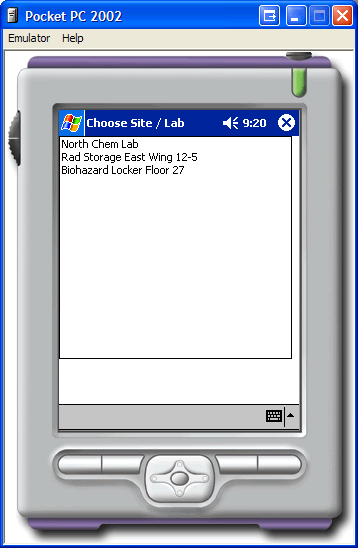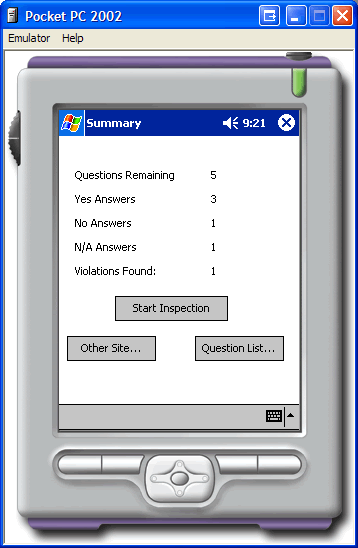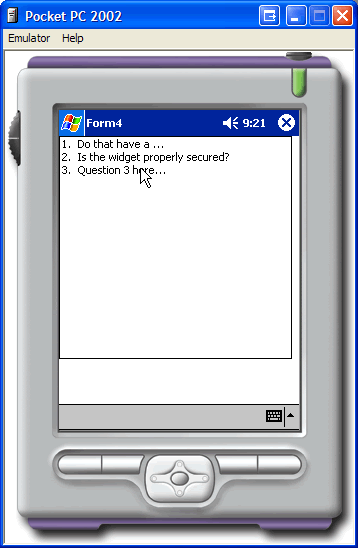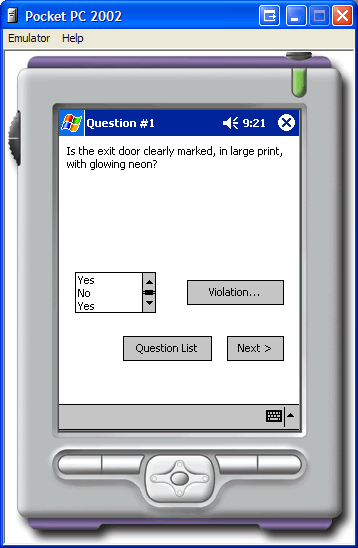 PDA
Application Walkthrough
PDA
Application Walkthrough PDA
Application Walkthrough
PDA
Application WalkthroughKyle Cordes
Oasis Digital Solutions Inc.
August 2003
 |
The first prototype for the Pocket PC is partially functional - the screens flow properly, but the data is not fully connected to the (internal) database, nor is the sync-to-PC working. It is easy to write software for this platform with Embedded VB, which has some signicant limitations, but is sufficient for simple application. A different Conduit will be necessary, as the Pocket PC conduit programming model is quite different from the Palm model. They can both use the same database, administrative software, reports, etc. I found the software needed to create a conduit for the Pocket PC platform. However, for that platform I have seen the suggestion to not use the ActiveSync process, but instead have the application contact the database or backend system and perform its own sync; for the prototypes I experimented with both approaches to understand the tradeoffs. The prototype shown here accesses data from a MySQL database, not using the ActiveSync process. Also, while Palm development can be done 99% with the Palm Emulator (on the PC), Pocket PC development requires heavier use of an actual device. |
 |
It's common to have a more stylized application appearance on Pocket
PC, than on Palm. In keeping with that, the final application may have
more interesting button appearances, non-white background, etc. (Of course
it will still have a clean, professional appearance appropriate for this
kind of application.) |
 |
The default fonts are smaller on the Pocket PC, showing more lines of text per screen. Note that Pocket PC devices actually have a lower screen resolution (240x320) than the newer Palm devices (320x320). The text is noticeably sharper on the Palm Zire 71 than on the HP Ipaq 5455. |
 |
This is as far as I got on the eVB prototype, before proceeding to the next option. I moved on, because of several factors:
|
Next, I built several screens, logic, etc. using Embedded Visual C++. This is the "native" tool for developing software for the Windows CE / Pocket PC platform, analogous to developing for the Palm with C/C++ or Pocket Studio. Unfortunately, the Win32-based API is quite tedious to develop with, to a mild extent for forms, controls, etc., and a greater extent for network communications, data access, etc. There is much to be learned by working with this approach for a few days, and it is clearly the right choice for a complex, performance-critical, shrinkwrapped application. However, the next option turns out to be much more effective for software like this Site Inspection system.